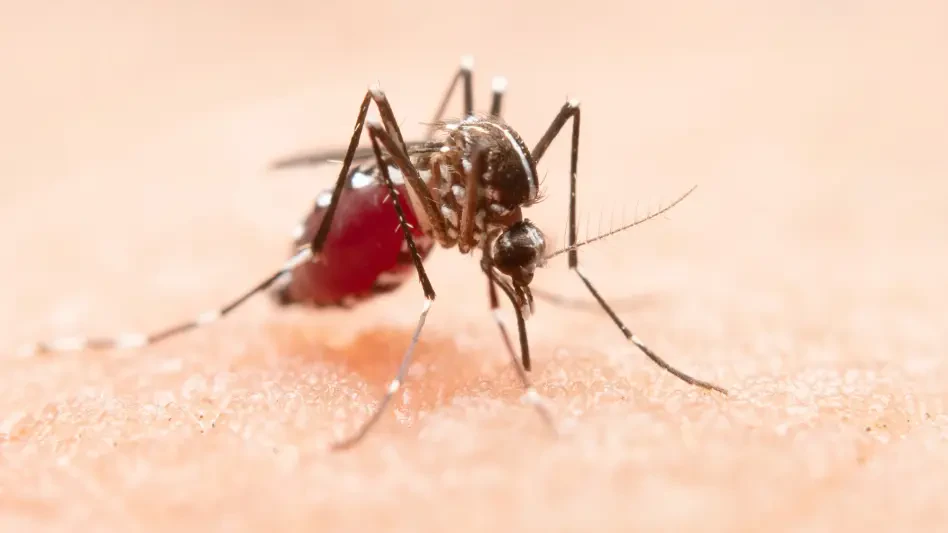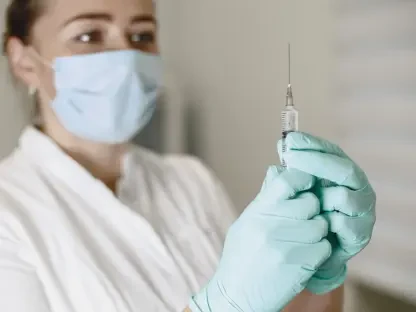Listen to the Article
Malaria, caused by plasmodium parasites, remains one of the world’s deadliest diseases, claiming the lives of millions yearly. The health industry has created and implemented several solutions, from bed nets to mosquito repellents, to protect individuals in high-risk nations from getting bitten. Despite past innovative approaches to preventing and treating the disease, the main challenge of drug resistance from mosquitoes continued to grow and adapt.
Now, researchers have discovered chemical compounds that may be the key to finally reducing the spread of malaria by targeting infected mosquitoes. Though traditional tools remain vital, this innovative approach might tip the scales towards sustained reductions in disease mortality and fortify malaria control efforts.
Understanding the Malaria Parasite
Malaria parasites infect 300-500 million people yearly and actively kill nearly 600,000 globally through bites from anopheles mosquitoes. Anopheles are female mosquitoes that contract the malaria parasite when feeding from an infected person, or taking a ‘blood meal’, and spreading the disease when biting other individuals.Generally, blood meals provide protein and iron to growing eggs when biting individuals, but to an infected mosquito, it also provides the nutrients necessary for parasite development.
Only female anopheles bite or transmit malaria, making them the sole arthropod vectors that spread plasmodium parasites, which cause malaria in humans. People who contract malaria experience a range of symptoms that warrant immediate medical attention. These commonly include:
Fever and sweating
Chills
Headaches
Muscle aches
Nausea
Vomiting
Diarrhea
Fatigue
Jaundice
Anemia
If the disease progresses, the symptoms become increasingly severe. Patients might start to experience kidney failure, coma, seizures, mental confusion, and ultimately death.
“We haven’t tried to directly kill parasites in the mosquito before this, because we were just killing the mosquito,” says researcher Dr Alexandra Probst, from Harvard. She continues to state that the approach is “no longer cutting it”.
The rising mortality numbers led a team of Harvard researchers to start and pursue this line of research.
Researcher’s Solution to Malaria Control
In the pursuit of finding a viable solution to the growing spread, Harvard University researchers analyzed malaria’s DNA in infected anopheles against 81 potentially lethal drugs. This process identified two chemical components, classified as endochin-like quinolones, that showed promising results in blocking malaria parasite growth within mosquitoes.
During the testing period, the two components were applied to bed nets to be absorbed through the mosquito tarsi (legs) after landing on them, and the outcome was observed for a year.
“Even materials with only low doses of the compounds blocked parasites completely,” said Alexandra S. Probst, the study’s lead author.
The study shows that the chemical components are lethal solely to the malaria parasite, not to the mosquitoes themselves. They directly target the parasite’s mitochondria, destroying it on a cellular level even if the mosquito survives contact with the net.
Essentially, these chemical compounds disinfect the mosquitoes, preventing them from transmitting the malaria parasite and reducing the emergence of resistance to existing insecticides or the compounds.
The team’s research and findings are published in the journal Nature.
Alternative Solutions:
Traditionally, as soon as a person has been infected with malaria, they have to start taking antimalarial medication to kill the type of plasmodium parasite in their body and clear the infection.
Common medications prescribed include:
Doxycycline
Artemisinin (artemether and artesunate)
Chloroquine
Atovaquone
Mefloquine
While these drugs are proven to work, they are not classified as cures. Patients would still be able to contract malaria multiple times if bitten by an infected mosquito.
Social Impact of Malaria
Insecticides are not as effective as they were in their first years of inception. In African regions, the rate at which mosquitoes survive being exposed to drugs, such as artemisinin, has increased from 1% in 2005 to 16% in 2015.
Before these recent findings, the malaria parasite was resistant to the drug chloroquine in East Africa in the 1970s; the following decade, malaria deaths on the continent of Africa grew from 493,000 to 1.6 million by 2004.
Since mosquitoes keep adapting and resisting antimalarial drugs, researchers have decided to focus their efforts on eliminating the source of the disease: the malaria parasite within mosquitoes.
“Mosquitoes should be given malaria drugs to clear their infection so they can no longer spread the disease,” say Harvard researchers.
Before this discovery, previous anti-malaria solutions had demonstrated their effectiveness.
Anti-mosquito objects
Bed nets and window screens are the most successful form of prevention used so far, as mosquitoes are mostly active at night when nets are draped over beds and windows are closed. They are treated with insecticides aimed at killing or repelling mosquitoes.
Mosquito repellent
Two types of repellents can be used on fabrics or skin. Repellents with diethyltoluamide can be applied to the skin. It interferes with the insects’ ability to detect human scent, decreasing their chances of finding and biting people.
Repellents containing permethrin (a synthetic insecticide) can be put on clothes, nets, and tents, effectively disrupting the nervous system of insects like mosquitoes and ticks, leading them to paralysis and death.
Malaria vaccines
Vaccines are used to prevent the spread of malaria. There are currently two vaccines approved by the World Health Organization: RTS,S/AS01 (Mosquirix) and R21/Matrix-M.
Researchers aim to use these alternative options, especially bed nets, in their mission to reduce the spread. By coating the bed nets with their chemical compounds, mosquitoes would be successfully cured of the malaria parasite.
With the nets costing less than $1 or $2 a piece, and the inexpensive drugs lasting for a year at a time, researchers estimate this will be an affordable and long-lasting solution. This affordable solution will prove beneficial to the WHO African region, where 94% of all malaria cases occur.
Final Thoughts
Due to the rapidly growing resistance in mosquitoes against repellent drugs, researchers have come together to conduct mosquito-targeted interventions aimed at killing the source: plasmodium parasites.
This study represents a unique and historically untapped field in malaria control, as previous efforts were aimed at reactive solutions like medicines rather than taking a proactive approach. The research provides a solution to circumvent insecticide resistance and drug resistance in malaria-carrying mosquitoes, two main challenges that traditional methods often face.
As this discovery is still under review, the drug-coated bed nets have shown promising results in laboratory stages, and researchers are preparing to take their findings to real-world trials in Ethiopia.









